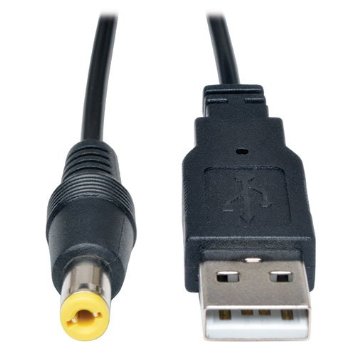Phones Used on the Mesh
The following table summarizes phones that various hams have successfully used on the Mesh. Please suggest any additions or comments below.
| Model | POE * | Local Power | Web Interface | tftp | Comments |
| Cisco | http://www.cisco.com | ||||
| 7940 | Yes | 48V DC | Partial | Required | 2 lines; need to load SIP; see N4SV comments |
| 7961 | Yes | 48V DC | Partial | Required | Up to 6 lines; need to load SIP; see N4SV comments |
| Grandstream | http://www.grandstream.com | ||||
| GXP-1450 | No | 5V DC | Yes | Yes | 2 lines |
| GXP-1620/GXP-1625 | 1625 only | 5V DC | Yes | Firmware updates also via http or https |
2 lines; Both models are the same phone - only 1625 supports POE |
| GXP-2000 | Yes | 5V DC | Yes | Yes | Up to 4 lines |
| GXP-2140 | Yes | 12V DC | yes | yes | Up to 4 lines; |
| GXP-2160 | Yes | 12V DC | yes | yes | Up to 6 lines; has extra speed dial buttons programmable through the web interface. |
| GXP-2200 | Yes | 12V DC | Yes | Yes | Similar to 2160; no extra speed dial buttons; nice video phone with Android but no built-in camera (ie, receive only) |
| GXV3240 | Yes | Yes |
|
||
| GXV3275 | Yes | Yes |
|
||
| HT503 | No | 12V DC | Yes | ? | 2-port ATA 1-FXO 1-FXS |
| HT701 | No | 12V DC | Yes | ? | 1-Port ATA FXS |
| DP715/DP710 | No | Base: 6v wall wart Portable: 2 rech. AAA batteries |
Yes | Yes |
|
| Linksys(now Cisco) | |||||
| SPA503G | 5V DC | Yes | 3 Lines | ||
| SPA504G | Yes | 5V DC | Yes |
|
|
| SPA941 | No | 5V DC | Yes |
|
|
| Nortel | |||||
| 1535 | No | 12V DC | No | ? |
|
| Obihai | http://www.obihai.com | ||||
| Obi1062 | Yes | 12V DC | Yes | ? | See W7REJ comments below |
| Polycom | http://www.polycom.com | ||||
| SoundPoint 32x | Yes | 24V DC | Yes | Yes | 2 lines |
| SoundPoint 33x | Yes | 24V DC | Yes | Yes | 2 lines |
| SoundStation IP 5000 | Yes | POE only | Yes | ftp | 1 line; local power via POE injector only |
| VVX410 | Yes | Yes | Yes | Yes | 2 lines |
| SNOM | http://www.snom.com | ||||
| 300 | 5V DC | Yes | |||
| Yealink | http://www.yealink.com | ||||
| SIP-T22P | Yes | 5V DC | Yes | Yes |
|
| SIP-T54W | Yes | 5V DC | Yes | Yes |
|
* POE here means managed 48 Volt POE (IEEE 802.3), such as obtained from an ethernet switch. It does not mean passive 12/24V power as used by a Ubiquiti node or an external 12V power supply.
Last revised 2023-01-22. Thanks for everyone's comments below and private emails.


Some additional details for your chart;
Polycom SountPoint 3XX series, does support PoE, also works with a 24 VDC local power supply, has a WEB GUI, can also be loaded from TFTP, can support 2 lines
SNOM 300, runs from local 5 VDC power supply, has WEB GUI
Cisco 7940/60 Must first be flashed with SIP firmware, does support PoE, runs from local 48 VDC power supply, has a simplified "list only" WEB GUI but must be loaded from TFTP to function, 7940 supports 2 lines, 7960 up to 6 lines
Thanks Mark for putting the chart together, I am sure it will be helpful for those just getting started in VoIP over mesh
73, Bill, N4SV
Moderator note: Thanks for your input Bill. Your comments have been added to the chart.
For your deployments, are you using some type of pbx or sip server? Or are you dialing by IP or creating local phone books of some sort?
I really like the idea of not having a centralized server to depend upon, but I also like the ability to provide off-mesh calls or having a centralized phone book.
Moderator note: This topic moved to a new thread under VOIP. Please reply on that thread.
Since most (all?) VoIP phone support a central phone book via LDAP or HTTP, maybe a small program could be written to create and sync-up a phone book across the mesh and write them to a local LDAP/HTTP server. The phone just sees the local service.
For it to be truly decentralized, some type of gossip/peer discovery protocol would have to be used for info exchange.
Could be a fun project.
Moderator note: This topic moved to a new thread under VOIP. Please reply on that thread.
I have tried the GXV3240. Works the same as the others but is touch screen and can make video calls. It runs a version of the android operating system and yes I did try to install the sevral mesh software on it. It did install and did work sort of. Worked fine in speaker mode but if you want to use the handset the software and the phone gets confused. I tried 2 phones over mesh which worked fine but I am sure once you get more then a few there will be bandwidth issues.
I am also using the UCM6104 as my controller. Very easy to configure, only 12v power requirement, It has the ability to add 4 land line connections or use an online phone service if internet is available for outside calls. There is also instructions on grandstreams website on how to link together multiple controllers.
They can be used as a portable unit or central server setup.
Hope that helps add to the list and answer the controller question.
Thanks
Means that either:
- your phone cannot contact your PBX server
- your username/id is invalid to the PBX server
- your password is invalid/doesn't match the PBX server
If using "DIAL by IP", and account is not needed.I had recommended that to him before and to also look for calling without registration. I will look for the param list for that phone. All he needs to start is IP dialing.
I wanted to be able to do that plus have the extra option to add land lines or internet phone service to it. There are a few events we do here that having that feature would be useful. We usually spend quite a bit of time running land line cords to our county Sheriffs trailer during the county fair and sometimes other events. The old analog system that is in the trailer has never worked properly so we use our own setup. This helps simplify things a lot for us where we can now place the UCM6104 in the fair building where the land lines are located and just run the phones over wifi or one network cable going to the trailers computer system.
The UCM6104 does have tons of features most that we will never use but since it helps do auto setup and simplify the operation a few of us decided to pitch in a buy it. Most of our radio operators in the area do not have the best programing skills so we thought this would make things smoother which so far it has. Hope that helps give an idea on our thoughts here.
Use case:
Ubiquiti ToughSwitch TS-5-POE outputs either 0 or 24V passive PoE. I was wondering if I could run any of the 12V ones off of that.
They sell DC to DC switching power supplies 24v in to 12v out (and many variants there of) that may work.
http://www.amazon.com/50-4W-ENCLOSED-DC-CONVERTER/dp/B00B88EAAO
This may be a bit big in this case but if you search you can find others (may need filtering) from smaller self contained modules.
looks nice, but, $9
The issue is more of a limitation on how many power-watts the ipCam/device needs and what this adaptor rating is. The specs say 1W (probably spike), then says 0.75W elsewhere (probably continuous).
If you have a PTZ ipCam drawing 2+W of power, this is problematic. If so, look on the vendor site to see if same device at higher power specs, or you would need to piece all the parts together from some of the other responses. We're locally running a 12v ipCam PTZ over a 100' Ubiquiti toughCable Pro, but using the power supply that came with the ipCam--think it was a 2A. There's an injector on the toughswitch side--so 0v port. It is working fine. But the issue is voltage drop at that distance to not affect the ipCam function.
Joe AE6XE
If you have to step from 24/12 see eBay
These are small, efficient and weatherproof and don't cost that much .... similar ones can be found on Amazon.
https://www.ebay.com/sch/i.html?_from=R40&_trksid=p2057872.m570.l1313.TR0.TRC0.H0.TRS0&_nkw=L7812+LM7812+12V+Step+Down+Converter+Voltage+Regulator+Power+Supply+Module&_sacat=0
They use a LM7812 chip but are a complete module with heat sink, and under $3!
Thanks
Dave
To power the phone I use with Stanley, I was able to hide the 5V switching regulator into the base of the phone.
https://www.arednmesh.org/content/please-meet-stanley#comment-10549
Dave
We have use in Europe HamNET IP Phones (and soft phones: for example PhonerLite with good codec OPUS) with asterisk PBX base on DUNDi protocol
You can see online status HamNET Europe PBX:
https://www.afu.rwth-aachen.de/dundicrawler/
We have generate phone number base on callsign which is converted to DTMF code. We can use special WWW page which help generate phone number from callsign:
https://www.oe2wnl.at/calltodtmf-voip.php or manually: NOCALL = N (62) + O (63) + C (23) + A (21) + L (53) + L (53) = 626323215353
73 Waldek SP2ONG
I have several Linksys SPA941 phones.
POE: no
5 Volts . . . . 12V mistake fried one (grabbed wrong wart).
4 lines
IP dialing only till I figure out more options.
SPA941 PARAM CHANGES
FACTORY RESET
OK, let’s set parameters for our phone
The following in bold caps are selections on the browser screen:
PHONE
HINT: If the screen image does not return, retransmit from the URL entry.
EXT 1
USER
REGIONAL
Hint: date – even though it shows the example of (MM/DD, do MM/DD/YYYY)
HELPFUL INFO
Linksys SPA Provisioning Guide
I need some guidance for a Grandstream GXP2160 VOIP phone settings to get the phone registered to operate on Broadband-Hamnet.
I use Android's native sip on my cell or tablet over WiFi or Cell. The PBX server is RasPBX. http://www.raspberry-asterisk.org/ Yes it has FreePBX GUI.
But I run a small codec like G.729 over wifi.. G.729 sounds like an old 3G cell phone.. But low bandwidth. So any wired SIP phone that can run G.729 and 12 volt or lower for field work. Also for field work I don't like POE. Something else you might want to think about is App-RPT for Asterisk.
David
if you have a phone or other device that runs off 5vdc, then there is this option for field powering from a USB port:

I strongly recommend the one made by Tripp-Lite, it handles decent current draw, works over a wider range of applications.
https://www.amazon.com/TRIPP-U152-003-M-3-Feet-Barrel-USB2TYPEM/dp/B00L1G079Q?ie=UTF8&keywords=TRIPP%20LITE%20U152-003-M&qid=1463447605&ref_=sr_1_2&sr=8-2
Jeff KC8NNO Nashville TN
My guess is that converting the voltage is going to be very costly from an energy standpoint, but has anyone done this, or have a resource on how to do it?
Thanks.
Do you have a USB port somewhere handy, look at post #31
Put a switch between the UBNT air Router and the Cisco phone it works fine.
I have the feeling its to do with the VLAN's but not sure the diffrence of the Linksys LAN ports running HSMM and the UNBT running AREDN and why the Linksys works.
Andy
Hi Andy,
When running AREDN code on an Air Router, the right most jack (when looking at the back of the node) is the DTD port, running VLAN 2 tagged. Make sure you plug your phone into the next three jacks to the left of the DTD jack. The jack all the way on the left is the WAN jack. You certainly don't want to plug your phone in there! :-) Just beware that the 4 jacks in a row are not all LAN ports, just the 3 left-most ones.
Do you get the same condition if you plug your Cisco phone into the middle 3 jacks? Your post did not mention which jack into which you plugged your phone.
Mark, N2MH
PoE: Yes
Local power: 12v
Web interface: Yes
tftp: ?
Comments: I am currently using an Obi1062. Works great with excellent voice quality. Either local or Obihai Web configuration.
I am looking at some Yealink T21P E2 phones on Craigslist. Anyone know if there are any issues with using these? Seems like they are very similar to the T22P model listed in the OP's table.
Thanks for any input.
Kevin
KK4JZS
Kevin,
I've configured both the Yealink T22P and a T19 phones. Aside from the number of lines, the configuration pages look identical. I would expect the same to hold true for the T21 phones. They do work well on the Mesh. Be advised that dialing by ip address on these phones is difficult compared to the Grandstream series of phones. If direct ip dialing is important to you, you may wish to look at the Grandstream phones instead. If all you want is a phone that will be behind a pbx, then Yealink will work well for you.
73, Mark
Pages